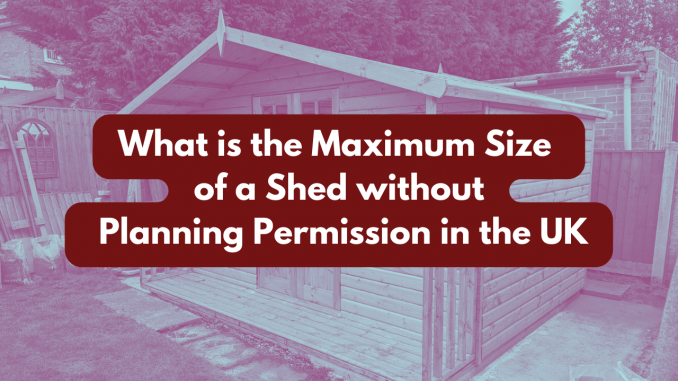
There are certain rules and regulations related to building sheds without the need for planning permission. These rules apply to England, and there might be some differences in Scotland, Wales, and Northern Ireland, so it’s essential to check with the local authorities for the specific regulations in those areas.
Maximum Height of a Shed in the UK
A shed’s height cannot be more 3 metres in height and can vary depending on the roof type. It should not cover more than 15 metres. It also can’t take up more than 50% of your garden.
Can you build a shed without planning permission?
In England, you can build a shed without planning permission if it meets the following conditions:
- The shed is located within the grounds of a house, not in front of the principal elevation (the front of the house facing the road).
- The shed’s height, including any other existing outbuildings, does not exceed 4 meters if it has a dual-pitched roof (like a standard house roof), or 3 meters in any other case.
- The overall footprint (ground area) of the shed and any other outbuildings does not exceed 50% of the total area of the property around the original house. Note that this includes any previous additions or sheds that were added with permitted development rights.
- The shed is not used as living accommodation, is not self-contained, and does not have sleeping facilities.
It’s important to remember that these rules apply to houses and not to flats, maisonettes, or other types of buildings. Additionally, if your property is a Grade 2 listed building or in a designated area like a National Park, Area of Outstanding Natural Beauty, or Conservation Area, there may be further restrictions on permitted development rights.
Shed Regulations in the UK
Sheds and other outbuildings are generally exempt from building regulations if they meet specific criteria. However, the rules can vary depending on factors like the size and intended use of the shed. It’s advisable to check with your local planning office to ensure compliance with any local regulations.
Since regulations can change and vary between regions, it’s always best to double-check with your local planning authority to ensure you’re compliant with the current rules before proceeding with any construction. You can also visit the UK government’s planning portal website for more detailed information on permitted development rights.

Leave a Reply